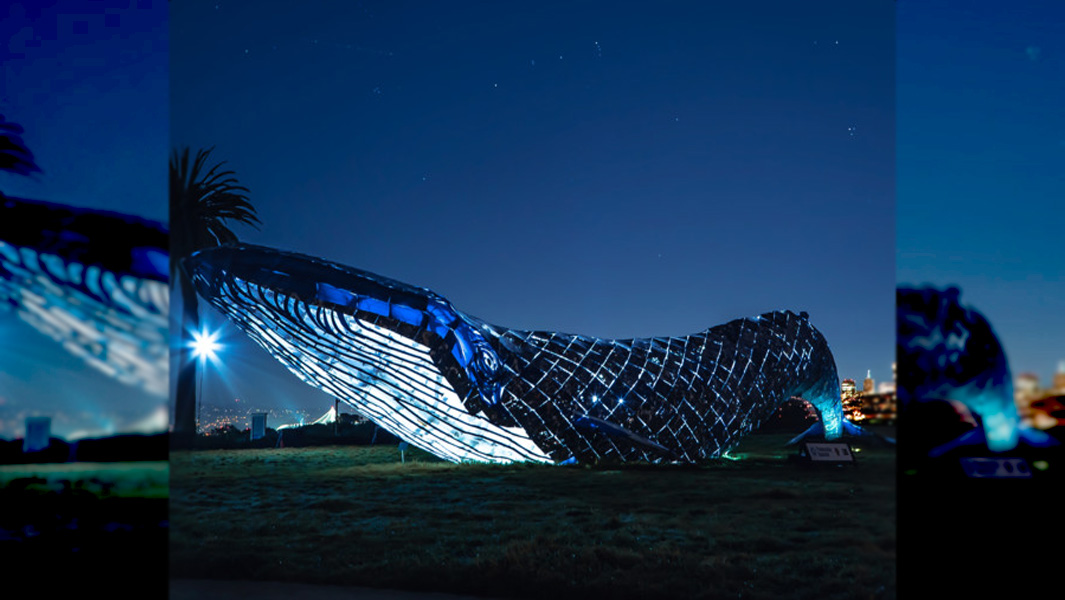


The Great Barrier Reef is the world's longest reef, measuring 2,027 km (1,260 mi).
Stretching along the north-east coast of Australia, the reef is made up of billions of corals. It is also a hotspot for humpback whales and home to over 1,500 different species of tropical fish. 🐳🐠
The Great Barrier Reef also holds a record for being the world’s largest marine animal structure. It’s so big that it can be seen from the Moon! 🌙
It took thousands of years to form, but it's now being destroyed very quickly due to global warming. 😟
Luckily, we still might be able to save it. Let’s learn about the dangers facing the Great Barrier Reef and what you can do to help.
Aboriginal Australians have inhabited the Great Barrier Reef area for at least 40,000 years and are recognized to be its true owners.
Back then, it wasn’t even underwater!
The area was covered in forests and it was home to many animals such as kangaroos and koala bears. 🦘️🐨

10,000 years ago, at the end of the last Ice Age, the “Great Flood” occurred. The ice at the North and South Poles melted, and sea levels rose all around the world. 🌊
The land on Australia’s coast was flooded and the warm, shallow water became the perfect place for corals to grow.
Corals are small animals that live in warm water and attach themselves to rocks. Some types of coral develop a hard skeleton. 🦴️
Over many thousands of years, they built up and joined together to create the Great Barrier Reef.

Coral reefs cover less than 1% of the ocean floor, but they are essential for the survival of 25% of all sea creatures. 🦈🐟
As an example, Raine Island, in the north of the Great Barrier Reef, is home to the world's largest green turtle rookery. 🐢
Up to 60,000 female green turtles migrate thousands of kilometres each breeding season to lay their eggs here.

And it’s not just turtles that have babies on Raine Island. Huge numbers of seabirds, also nest and roost there in safety. 🐣
Humans need coral reefs too. Corals – and the algae living inside them – produce 50% of the oxygen that we breathe.
Did you know?
Algae are neither plants nor animals, but they are living organisms. They can grow in many different places and come in many shapes and colours. Algae are very important because they make much of Earth’s oxygen.

The Great Barrier Reef is facing many problems today. Pollution, overfishing and unsustainable tourism have all caused damage to the reef.
However, the biggest danger to the Great Barrier Reef is climate change, which causes coral bleaching.
Coral bleaching causes corals to starve and turn white in colour. It happens when the water temperature rises, which causes the algae living inside coral to become poisonous. ☢️
The coral has no choice but to kick out the toxic algae, but this also causes the coral to die because the algae provided most of the coral’s energy.
Sadly, coral bleaching events are becoming more and more common.
The Great Barrier Reef has lost around half of its corals since 1995 and this number will only increase as global warming continues. 😞

Solving the most important problem of our generation – global warming – will require everyone in the world to make changes. 🌍
There are many things we can do as a society to combat climate change:

Here are some changes you can make in your own life to help out:
Fixing the damage done to our planet won’t be easy, but if everyone does their part, we may still be able to save amazing places like the Great Barrier Reef.
Are you an eco-warrior? Find out by taking the Epic eco quiz and Natural world quiz!